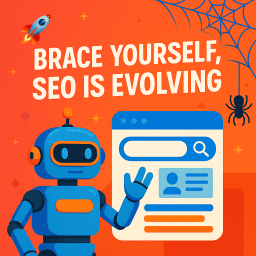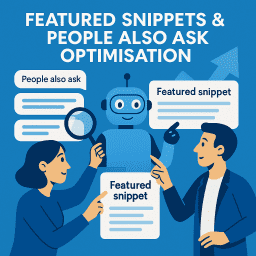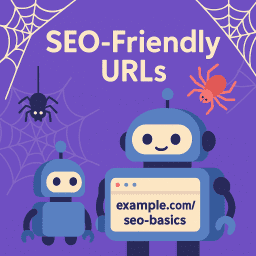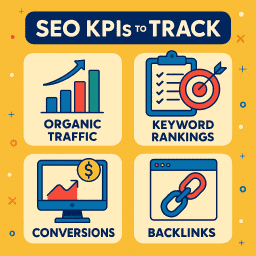SEO Forecasting: Predict Traffic and ROI Before You Spend
How to estimate traffic, rankings, and return before investing in SEO
📈 Stop Guessing: Forecast Your SEO Success Before You Spend
SEO is often seen as a leap of faith—spend money now and hope it pays off later. But it doesn’t have to be that way. With the right data and a solid SEO forecasting model, you can predict performance outcomes before committing to a campaign. This means fewer surprises, smarter budgeting, and more strategic decisions.
In this guide, we’ll walk through how SEO forecasting works, what inputs matter most, and how to model potential ROI using traffic estimates, keyword data, and conversion assumptions.
🔍 What Is SEO Forecasting?
SEO forecasting is the process of estimating the future performance of your SEO efforts—usually in terms of traffic, rankings, and revenue. Instead of guessing, you use data to model what might happen if you achieve specific goals (like reaching the top 3 results for a target keyword).
📥 Inputs That Drive Forecasts
A solid SEO forecast starts with good data. Here’s what you need:
- 🔑 Target keywords – with monthly search volumes
- 📈 Current rankings – for your site and competitors
- 🎯 Click-through rate (CTR) curves – based on position in Google
- 🧮 Conversion rates – from organic sessions to leads or sales
- 💰 Average order value (AOV) or lifetime customer value (LCV)
🧠 How to Model Traffic Gains
Let’s say you want to rank in the top 3 for a keyword with 5,000 monthly searches. If you reach position #2, you might earn a 15% CTR—that’s 750 clicks per month. Multiply that by your average conversion rate, and you’ve got a projection for leads or sales.
Repeat this process for all your priority keywords and you’ll have a forecast that shows potential organic traffic growth and revenue.
💸 Predicting ROI from SEO
Once you have a traffic forecast, you can add your average sale or lead value to calculate revenue. Then subtract your SEO costs (internal team or agency fees) to estimate return on investment (ROI).
Example:
- 📈 Forecasted traffic: 10,000 visits/month
- 🛒 Conversion rate: 3%
- 💳 AOV: £200
- 🎯 Revenue: £6,000/month
- 💼 SEO cost: £2,000/month
- 📊 Estimated ROI: 200%
🧱 The Limits of Forecasting
Forecasts are useful, but they’re not guarantees. Rankings depend on many factors—competition, algorithm updates, and execution quality. Always treat SEO forecasting as directional rather than definitive. It’s a strategic guide, not a crystal ball.
📌 Tools That Help
- 🔍 Ahrefs / Semrush – for keyword data and traffic potential
- 📊 Google Search Console – for baseline performance
- 📈 Google Sheets / Excel – to model your forecast
- 📐 SEOmonitor – advanced forecasting and ROI modelling
🚀 Why This Matters for SMEs
For small businesses, budget matters. You can’t afford to waste months on vague SEO efforts. Forecasting gives you a clear picture of what’s realistic—and helps you justify the investment to decision-makers or clients.
✅ Final Thought: SEO Isn’t a Gamble
You wouldn’t launch a new product without a forecasted sales plan—so why would you launch an SEO campaign blind? With the right model, you can approach SEO like a smart investment: measurable, manageable, and driven by data.
“Good SEO strategy isn’t about guesswork—it’s about risk management. Forecasting turns speculation into strategy.”
– David Roche
💬 What the Experts Are Saying
- Lily Ray: “Forecasting makes SEO measurable and gives stakeholders confidence in long-term investment.”
- Tom Critchlow: “A forecast isn’t a promise—it’s a narrative you can use to guide strategic SEO decisions.”
- Aleyda Solis: “SEO forecasting is the difference between guessing and growing.”
📝 Recap and Clarify: Post-Specific FAQs
What is SEO forecasting?
SEO forecasting is the process of estimating future website traffic, conversions, or revenue from SEO efforts using historical data and projections.
Why is SEO ROI modelling important?
It helps justify SEO investment by estimating the return on effort or spend, guiding smarter budgeting and stakeholder buy-in.
What tools are best for SEO forecasting?
Tools like Google Search Console, Ahrefs, Semrush, Looker Studio, and Excel/Sheets are commonly used to track and forecast SEO performance.
What’s the difference between traffic forecasting and ROI modelling?
Traffic forecasting estimates how many visitors you’ll get. ROI modelling calculates the monetary value those visitors may generate based on conversion rates.
Can small businesses use SEO forecasting effectively?
Yes. Even basic projections based on keyword data and traffic benchmarks can help small businesses set realistic SEO expectations and track growth.
How do I estimate SEO ROI?
Multiply projected organic traffic by conversion rate and average order value or lead value, then subtract your SEO costs to calculate ROI.
What data do I need to start SEO forecasting?
You’ll need baseline traffic and ranking data, keyword volume, CTR benchmarks, conversion rates, and revenue or lead value metrics.
Is SEO forecasting accurate?
Forecasting is never 100% accurate, but well-informed models can provide realistic expectations and help identify growth opportunities.
How often should I update my SEO projections?
Review and update your SEO forecasts quarterly or after major campaigns, algorithm updates, or ranking shifts to maintain accuracy.
What’s one common mistake in SEO ROI modelling?
Overestimating short-term returns. SEO takes time, and models should account for lagging gains, volatility, and longer-term benefits.







